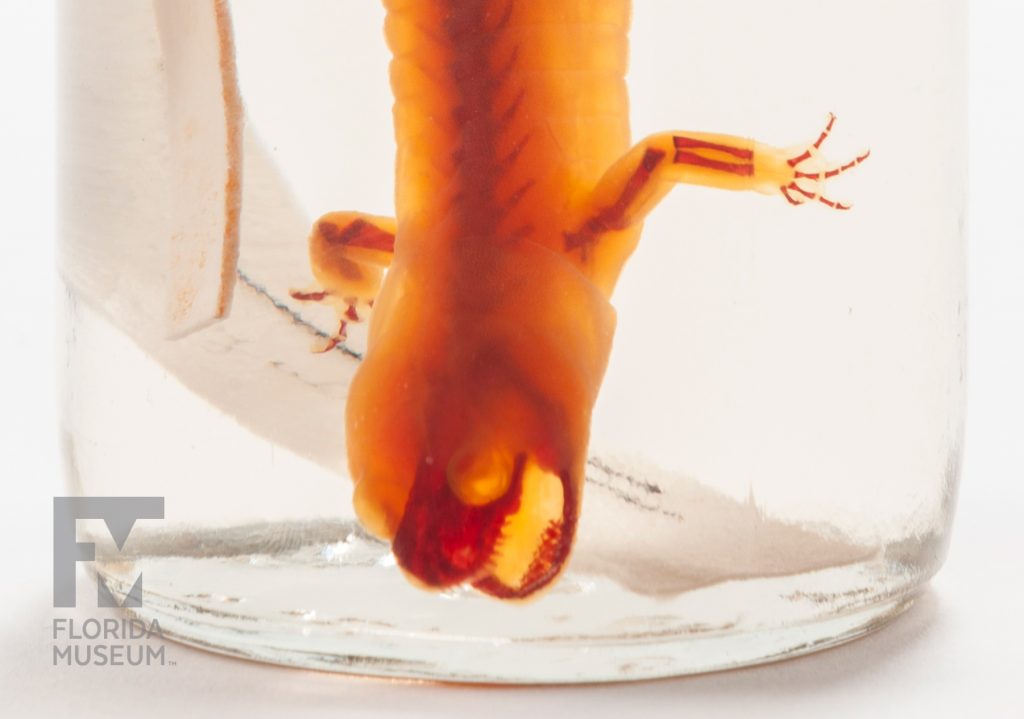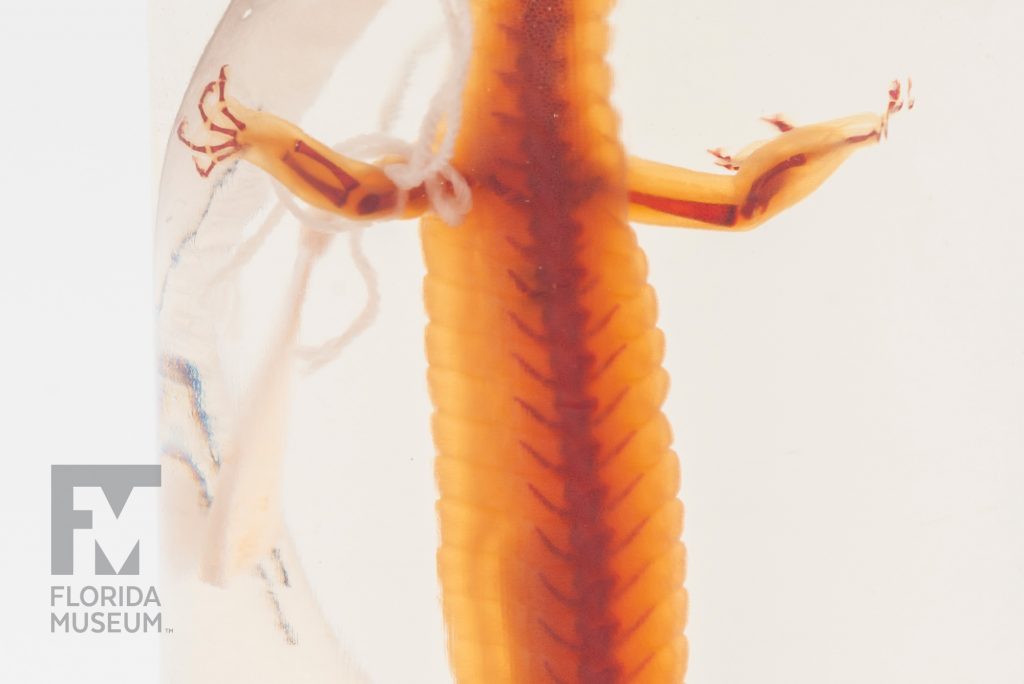Scientists sometimes use enzymes and dyes to study animal anatomy and compare relationships among species. Today they also use techniques such as DNA studies and micro-CT scanning, which do not alter or damage unique specimens.
Summary
Cleared and Stained Salamander (Aneides lugubris)
From Marin Co., California, Mar. 1953
Collection
Story
The herpetology collections at the Florida Museum of Natural History contain hundreds of thousands of reptile and amphibian specimens. Most of these are preserved whole in alcohol or as skeletonized material, but some specimens —like this salamander— have been treated with chemicals to turn their bones red, cartilage blue and everything else transparent. This process is known as clearing and staining and has been an important way of looking inside vertebrate specimens for over 100 years. The specimen is kept in glycerine and can be manipulated and moved to see how the bones and cartilage shift around inside the body.
In addition to these time-honored techniques, we are also using new methodologies that allow us to look inside our specimens without having to permanently change them with chemicals. High resolution CT scanning allows us to see bones and cartilage in three dimensions. By staining the animals in iodine before scanning them, we are able to see soft tissues like muscles, blood vessels and nerves. Once the animal has been scanned, we are able to remove the iodine and return the specimen back to its original state.
The Florida Museum of Natural History is part of a multi-institution project that will produce high resolution soft-tissue scans for every family of vertebrates, putting the results online for researchers, educators or any other interested party to view, explore and analyze.
Edward Stanley
Postdoctoral Researcher, Herpetology*
Florida Museum of Natural History
Exhibit
On display Sept. 23, 2017-Jan. 7, 2018, Rare, Beautiful & Fascinating: 100 Years @FloridaMuseum celebrated the Museum’s rich history. Each Museum collection was asked to contribute its most interesting items and share the stories that make them special. Though the physical exhibit is closed, this companion website remains online, providing an opportunity to experience the Florida Museum’s most treasured specimens.
Exhibit Area: Working Lab
Theme: Preservation and Preparation
 Want to see more? Explore more than 300 breathtaking color photos of plants, animals, fossils and cultural heritage materials from the Florida Museum of Natural History’s collections in the award-winning book All Things Beautiful available from the University Press of Florida.
Want to see more? Explore more than 300 breathtaking color photos of plants, animals, fossils and cultural heritage materials from the Florida Museum of Natural History’s collections in the award-winning book All Things Beautiful available from the University Press of Florida.
*This title was accurate at the time the exhibit was on display in 2017. Please visit the collection website to verify current staff and student information.


